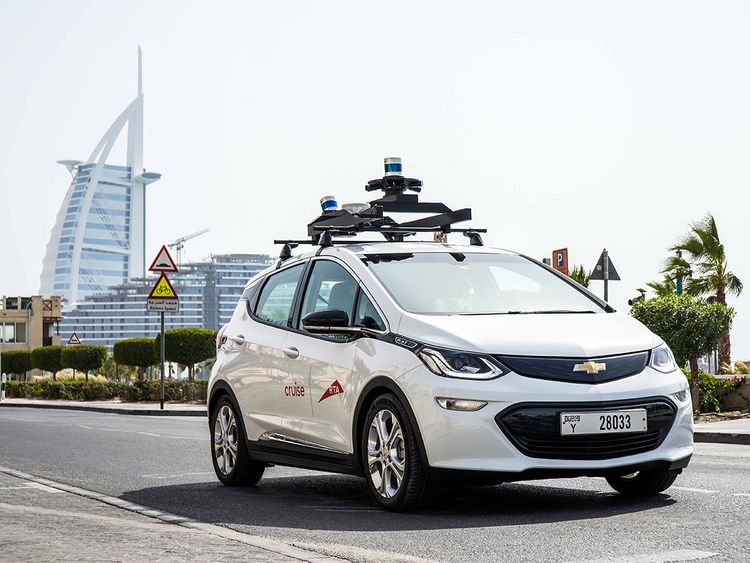Dubai will soon be the first city in the region to have driverless vehicles in operation by 2023 through Cruise, the self-driving ride service.

Next year, residents of Dubai are likely going to find themselves in an awkward moment saying “thankyou!” when they reach their destination, only to remember that there was no driver.
However, with the recent talks of AI becoming sentient , we don’t know for sure whether these self-driving cars will have feelings that would allow them to feel offended that we didn’t thank them for their service. It would be equally cool and scary if the car said “Thank you for you riding with Cruise!” or something.
Anyone thinking about KITT, the talking car in Knight Rider?
On Sunday, The Roads and Transport Authority (RTA) who are of the partners of the company announced that Cruise are digitally mapping the roads using two Chevrolet Bolt electric vehicles equipped with sensors and cameras.
Sheikh Hamdan bin Mohammed bin Rashid Al Maktoum, Crown Prince of Dubai and Chairman of the Executive Council had authorised the RTA to proceed with their partnership with Cruise to bring their autonomous taxis and e-Hail services to Dubai.
The origins of Cruise
Cruise was originally founded in San Francisco, California in 2013 by Kyle Vogt who wanted to fulfil his dream of making self-driving cars a reality.
“We’re giving more people access to more of what they need. All while saving lives and improving the health of our planet.”
“Our all electric, self-driving fleet will offer more freedom, more time and more peace of mind.”
How Cruise’s controls work
Both Chevrolet electric vehicles will be begin mapping the streets in the Jumeirah area and will driven by specialist drivers. The technology uses a high-resolution map of the physical environment using several sensors including LiDAR, camera, and others. The cars will be driven around the city to collect data which can then be used to create a navigable map for Cruise’s driverless vehicles to follow.

“Preparing digital maps is an essential step in the process of operating self-driving Cruise Origin vehicles, which will be deployed in limited numbers next year to offer taxi and e-Hail services. We have plans to increase the number of deployed vehicles gradually to reach up to 4,000 vehicles by 2030.” Said Mattar Al Tayer, Director General, Chairman of the Board of Executive Directors RTA.
“The operation of autonomous vehicles contributes to the integration of transport systems by easing the mobility of public transport riders and helping them to reach their final destinations. It fits well with RTA’s first and last-mile strategy approved last year relating to the first and last sectors of journeys from and to the nearest public transport points. It consists of two sections: groups and individuals.”
General Motors believe that “autonomous vehicles will have enormous potential benefits for society in the form of increased safety and access to transportation”
In California, the self-driving cars were used to deliver thousands of meals during the pandemic and has teamed up with Walmart to begin an all-electric self-delivery system for groceries.
It’ll be interesting to see if local delivery services such as Deliveroo or Talabat begin a partnership with Cruise to offer similar services in Dubai and perhaps eventually the rest of the UAE.
